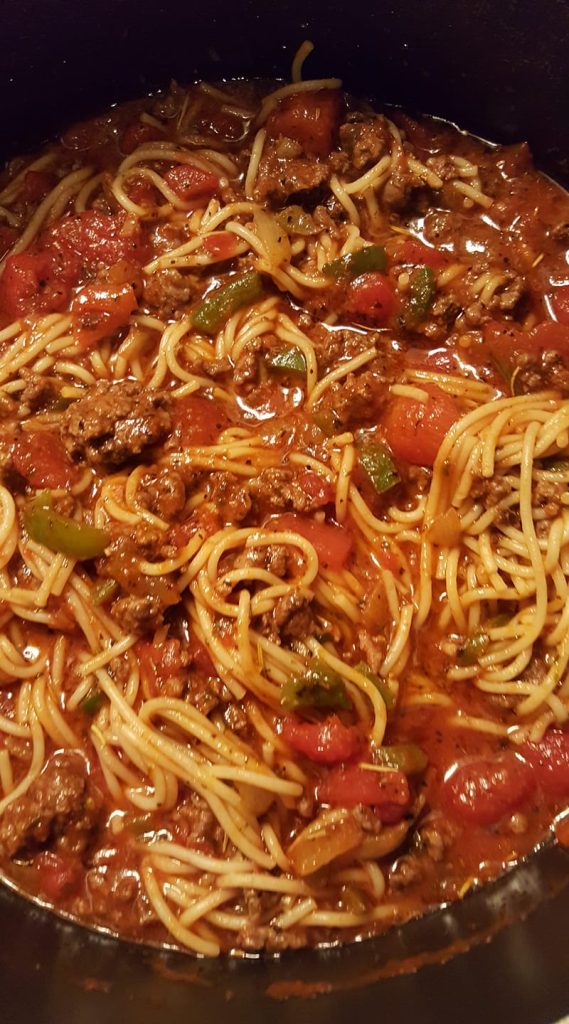Picture this: a comforting bowl of homemade spaghetti, where each strand of pasta is lovingly coated in a rich, savory sauce that whispers the tales of centuries past. This is not just any spaghetti dish; it’s a culinary journey that takes you through the rustic kitchens of Italy, where tradition and flavor reign supreme. In this recipe, I’m excited to share the secrets behind crafting a truly authentic plate of spaghetti that will have your taste buds singing and your heart yearning for more.
The Origins of Spaghetti: A Timeless Classic
To truly appreciate this dish, we must first delve into its storied past. Spaghetti, with its humble beginnings, has a history as rich and winding as the noodles themselves. It’s believed that pasta was brought to Italy in the 13th century by the renowned explorer Marco Polo, who encountered noodles on his travels to China. However, some historians argue that forms of pasta were already present in Italy long before Polo’s adventures. Regardless of its exact origins, spaghetti has become a quintessential Italian staple, cherished by generations and adored worldwide.
The Cultural Significance
In Italy, pasta is more than just food; it’s a way of life. It symbolizes family gatherings, shared laughter, and the joy of savoring each moment. The art of making pasta is often passed down from nonna to grandchild, each recipe a family heirloom. This recipe for homemade spaghetti aims to capture that spirit, encouraging you to create not just a meal, but an experience. When you roll out the dough and see it transform into golden strands, you are participating in a tradition that has been lovingly preserved through the ages.
Ingredients That Sing: The Heart of the Dish
What sets this homemade spaghetti apart is not just the method but the choice of ingredients. Quality is key. Start with the freshest eggs you can find; their vibrant yolks lend the pasta a beautiful color and richness. Pair this with finely milled semolina flour, which provides the perfect texture—firm yet tender. For the sauce, ripe tomatoes are a must. Their natural sweetness and acidity create a balanced base, while a splash of extra virgin olive oil adds a luxurious touch.
The Role of Aromatics
Garlic and onions form the aromatic backbone of the sauce, their gentle sautéing releasing a fragrance that fills the kitchen with warmth. Fresh basil leaves, torn just before serving, infuse the dish with a burst of herbal freshness. A hint of red pepper flakes lends a subtle heat that dances on the palate, while a sprinkle of freshly grated Parmesan cheese rounds out the flavors, creating harmony in every bite.
Techniques That Transform: Crafting the Perfect Pasta
Making pasta from scratch can seem daunting, but with some patience and practice, it becomes a rewarding ritual. Begin by creating a well in your mound of flour, cracking eggs into its center—a nod to nature’s perfect design. As you slowly incorporate the flour, your hands become instruments of transformation, turning simple ingredients into something extraordinary. Kneading the dough is therapeutic, requiring just the right amount of pressure. This process develops the gluten, giving the pasta its satisfying chew.
The Art of Cooking Pasta
Once the dough is rolled out and cut into strands, it’s time to cook. Remember, pasta should be cooked in water that’s as salty as the sea, enhancing its natural flavor. Fresh pasta cooks quickly, so keep an eye on it; the goal is al dente, where the pasta is cooked yet firm to the bite. As you drain the spaghetti, reserve a cup of the starchy cooking water—it’s the secret to a silky sauce that clings to the noodles like a lover’s embrace.
In Conclusion: A Culinary Invitation
Homemade spaghetti is more than just a dish; it’s an invitation to slow down and savor life’s simple pleasures. As you twirl the pasta around your fork, you’re partaking in a legacy that celebrates love, community, and the artistry of cooking. Whether you’re serving it to family, friends, or simply indulging on your own, each bite is a testament to the timeless allure of this Italian classic. So, roll up your sleeves, gather your ingredients, and let’s create a masterpiece that honors tradition while inviting new memories to be made. Buon appetito!

Spaghetti
Ingredients
For the Spaghetti
For the Sauce
Optional Toppings
Instructions
Preparing the Ingredients
-
Gather Your Ingredients
Start by gathering all your ingredients and tools. You'll need flour, eggs, a pinch of salt, and a touch of olive oil. Have a large mixing bowl, a fork, and a rolling pin ready.Room temperature eggs blend better with flour. Use '00' flour for a smooth, silky texture, if available. -
Create the Flour Well
On a clean surface, pour the flour into a mound. Make a well in the center large enough to hold your eggs and oil.Think of this as building a little volcano with flour. Make sure the walls are thick enough to hold the eggs without spilling.
Making the Dough
-
Mix the Dough
Crack the eggs into the well, add a pinch of salt, and drizzle in the olive oil. Using a fork, gently beat the eggs, gradually incorporating flour from the inner walls of the well.Be patient and avoid breaking the flour walls until the mixture thickens. -
Knead the Dough
Once the mixture is too thick to mix with a fork, use your hands to knead the dough. Knead for about 10 minutes until it's smooth and elastic.The dough should spring back when poked. If it's too sticky, sprinkle a little more flour.
Resting and Rolling the Dough
-
Let the Dough Rest
Wrap the dough in plastic wrap and let it rest for at least 30 minutes at room temperature. This relaxes the gluten, making it easier to roll out.Resting is crucial for a tender pasta. You can also refrigerate it overnight for convenience. -
Roll Out the Dough
Divide your dough into quarters. Take one portion and flatten it slightly, then use a rolling pin to roll it out into a thin sheet. Aim for about 1/16 inch thickness.Dust with flour as needed to prevent sticking. A pasta machine makes this step easier if you have one!
Cutting and Cooking the Pasta
-
Cut the Pasta
Fold the rolled dough into thirds, then cut into strips of your desired width. Shake out the strips to separate them.Aim for uniform thickness for even cooking. Dust with a little flour to prevent sticking. -
Cook the Pasta
Bring a large pot of salted water to a boil. Add your freshly cut pasta and cook for 2-4 minutes until al dente. Drain and serve immediately.Taste a strand to check doneness. Fresh pasta cooks quicker than dried!
Note
For a richer sauce, consider simmering it longer, allowing flavors to meld beautifully. Use fresh basil for a pop of brightness and finish with a drizzle of quality olive oil. Adjust salt and pepper to taste, considering the saltiness of your cheese if using. For a deeper umami profile, add a splash of soy sauce or a pinch of anchovy paste. If you prefer your spaghetti with a bit of heat, a pinch of red pepper flakes can do wonders. Tossing the pasta in the sauce for a minute before serving ensures each strand is coated perfectly. For gluten-free options, substitute regular spaghetti with a quality gluten-free variety, checking cooking times as they may vary. To enhance the texture, reserve some pasta water and add it slowly to the sauce until the desired consistency is reached. For a vegetarian version, omit any meat and consider adding vegetables like mushrooms or zucchini. For storage, keep in an airtight container in the fridge for up to three days. Reheat gently on the stove, adding a splash of water if necessary.


